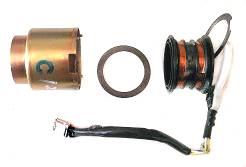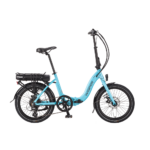I thought that I was fairly clued up when it came to how things worked, but still can't seem to get my head around this:
" Loss of crank bolt preload is greater on left than right cranks, because left cranks transmit torque and bending simultaneously while right cranks transmit these forces separately. The left crank transmits driving torque through the spindle to the right crank and chainwheel while the right crank drives the chainwheel directly. Besides that, the right crank transmits torque to the spindle only when standing on both pedals. Doing this with the right foot forward (goofy footed) is the only time the spindle transmits reverse torque "
Taken from: http://sheldonbrown.com/brandt/installing-cranks.html
Can anyone explain in a simpler way, why a left crank arm will loosen under use, before a right crank arm.
Hopefully everyone's not thinking 'what a thicko' lol
" Loss of crank bolt preload is greater on left than right cranks, because left cranks transmit torque and bending simultaneously while right cranks transmit these forces separately. The left crank transmits driving torque through the spindle to the right crank and chainwheel while the right crank drives the chainwheel directly. Besides that, the right crank transmits torque to the spindle only when standing on both pedals. Doing this with the right foot forward (goofy footed) is the only time the spindle transmits reverse torque "
Taken from: http://sheldonbrown.com/brandt/installing-cranks.html
Can anyone explain in a simpler way, why a left crank arm will loosen under use, before a right crank arm.
Hopefully everyone's not thinking 'what a thicko' lol








